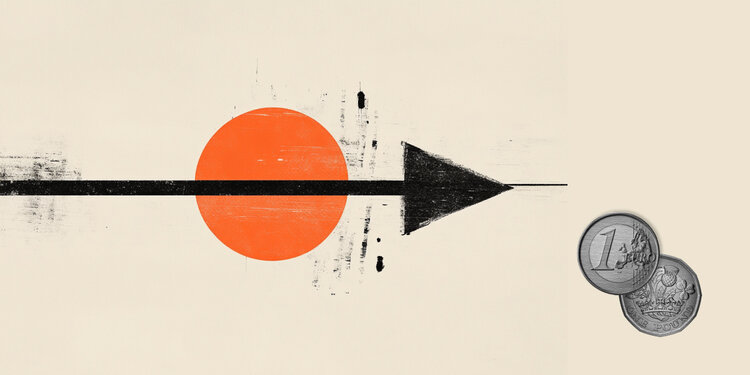- EUR/GBP holds gains as German GDP QoQ climbed 0.4% in Q1, against the expected 0.2% increase.
- The Euro may struggle as President Trump pushes the European Union to cut tariffs or face additional risks.
- The Pound Sterling appreciates as the UK Retail Sales rose 1.2% MoM in April, surpassing the expected 0.2% increase.
EUR/GBP recovers its recent losses registered in the previous session, trading around 0.8410 during the Asian hours on Friday. The currency cross advances as the Euro (EUR) attracts buying support following Germany’s Gross Domestic Product (GDP) data for the first quarter, released by Destatis.
German GDP quarter-over-quarter rose 0.4% in the first quarter, against the market expectations of a steady 0.2% increase. Meanwhile, the annual GDP rate remained unchanged at 0%, better than the expected decline of 0.2%.
However, the EUR/GBP cross may face challenges as the Euro could lose ground due to increased risk-off sentiment. The Financial Times reported that President Trump pushes the European Union (EU) to cut tariffs or face extra duties. US Trade Representative Jamieson Greer is set to tell EU counterpart Maroš Šefčovič, Commissioner for Trade and Economic Security, that the recent “explanatory note” falls short of US expectations.
On Thursday, European Central Bank (ECB) policymaker Boris Vujčić noted that the “Eurozone growth is positive but low.” Vujčić expects that inflation may get close to the 2% target at the end of the year and achieve the target in early 2026. Meanwhile, Joachim Nagel, President of the Bundesbank and member of the European Central Bank’s (ECB) Governing Council (GC), argued that the bank’s current interest rate level is not considered restrictive.
The upside of the EUR/GBP cross could be limited as the Pound Sterling (GBP) gains ground as the United Kingdom (UK) Retail Sales rose 1.2% month-over-month in April, surpassing the expected 0.2% increase. This advancement follows a 0.1% rise in March (revised from 0.4%). The Retail Sales YoY improved 5.0% in April against March’s 1.9%. Meanwhile, the core Retail Sales (excluding fuel data) grew 5.3% in April against the 2.6% previous revision, while monthly sales rose 1.3% MoM, compared to the previous revised growth of 0.2% and the estimated 0.3% reading.
The Pound Sterling (GBP) also attracted buyers after the GfK better-than-expected Consumer Confidence Index for the United Kingdom (UK) was released. The UK Consumer Confidence Index rose by 3 points to -20 in May, better than the expected reading of -22 and reversing from April’s -23 reading. However, consumer sentiment remains cautious as the index remains well below its long-term average.
Economic Indicator
Gross Domestic Product (QoQ)
The Gross Domestic Product released by the Statistisches Bundesamt Deutschland is a measure of the total value of all goods and services produced by Germany. The GDP is considered as a broad measure of the German economic activity and health. A high reading or a better than expected number has a positive effect on the EUR, while a falling trend is seen as negative (or bearish).
Read more.
Economic Indicator
Retail Sales (MoM)
The Retail Sales data, released by the Office for National Statistics on a monthly basis, measures the volume of sales of goods by retailers in Great Britain directly to end customers. Changes in Retail Sales are widely followed as an indicator of consumer spending. Percent changes reflect the rate of changes in such sales, with the MoM reading comparing sales volumes in the reference month with the previous month. Generally, a high reading is seen as bullish for the Pound Sterling (GBP), while a low reading is seen as bearish.
Read more.

